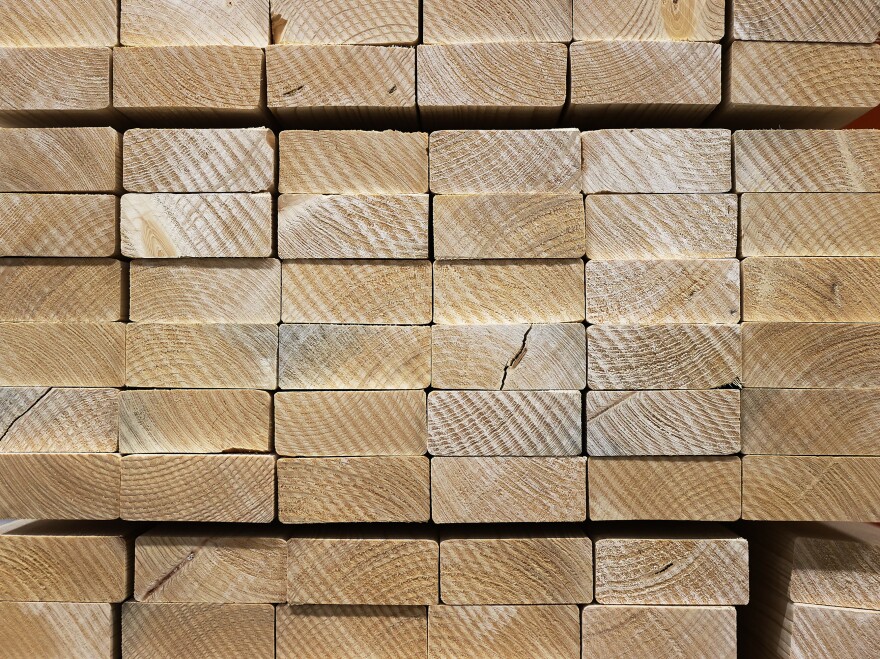Don’t be surprised if a year from now there’s suddenly a reliable supply of locally-sawn lumber on the Kenai Peninsula. At its Tuesday night meeting, the assembly heard a pitch from the borough lands department to organize the sale of thousands of acres of timber under attack by the spruce bark beetle.
Dakota Pruitt is a borough land management agent.
“The borough does not currently have a spruce bark beetle mitigation or forestry program it was phased out in 2009, with the last outbreak, but we, what we are proposing is a mass timber sale project. Our short-term goals are to seek authorization for timber sales. We'll need an ordinance to do this for all land classifications, or any line classifications. We want to initiate active forest management utilizing local labor, and we're going to be exploring grants and applying to them to support these projects,” Pruitt said.
We could get contractors out there immediately; we have so many interested contractors. They need wood, they need work, and they're calling me regularly.Dakota Pruitt
Pruitt says there are millions of dollars of value in the timber that would be lost if the forest is left to die from the beetle infestation.
“So 21,000 acres is of high concern. The average spruce volumes on every acre is about half to one merchantable cord, and merchantable is defined as anything we can utilize as a saw log or produce lumber, It's a high value product. And then there's that significant amount of fuel wood, That's 6 to 20 cords per wood. So it's a lot of wood biomass per acre that we're looking at. If you take that identify 21,000 acres and you multiply it by the average amount of merchable timber, that's 10,500 to 21,000 cords of wood. And if you scale that up to the average value right now $330,000 to $666,000 of merchantable timber and that's just the value to the landowner. You're also considering that huge volume of fuel wood there, two million to nine million dollars of fuel wood, and this is all volume that's being lost to spruce bark beetles,” Pruitt said.
Assemblyman Jesse Bjorkman asked Pruitt about reforestation after a harvest.
“Could you tell us what types of trees that the Lands Department would like to see the forest reforested with, and why is human intervention necessary in that process of reforestation as opposed to allowing natural succession to take place on the landscape?” Bjorkman asked.
“Yeah that's a huge question that we're considering, a good forester never plants a tree that they know won't succeed. We're looking back at the research that was done in the eight nineties, and eighties in the 90s to inform that, we're looking at the trials that were done for the seedling, seedling succession stock that were replanted. So, logical pine, Siberian larch, even yellow cedar, anything that was native to Alaska that we're seeing is going to adapt, or be more adaptable, to our current conditions,” Pruitt said.
Beyond that, Pruitt said that about 10 percent of white spruce on the peninsula are resistant to infestation by the spruce bark beetle, and the Land Department would like to have a genetic study done on them, to determine why the beetles avoid them.
Pruitt says she hopes to have the first timber sale brochure available by the end of the year.
“That gives us six months if we hire a forester by June, July, to inventory at those high priority areas and put together comprehensive management plans or timber sales or prescriptions. So, and that means that just processing contracts, we could get contractors out there immediately, and we have so many interested contractors. They need wood, they need work, and they're calling me regularly. So, I think that they're eager to get on the ground, and we can provide those jobs to them,” Pruitt said.
Pruitt urged action, saying there’s a limited window of opportunity to take advantage of the affected trees before they deteriorate to the point of being worthless.



